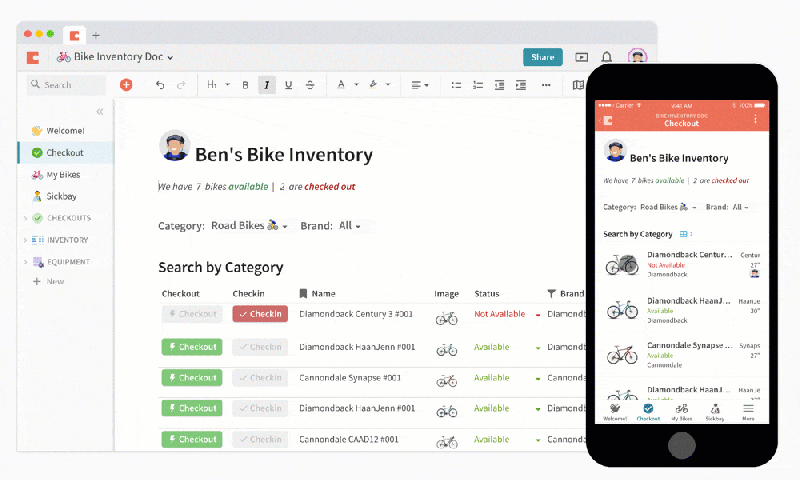When Coda opened for business in February after a monthslong beta period, it shipped clients for the web and iOS but inexplicably skipped over Android. Fortunately, the platform is finally rectifying the inequity with Coda for Android, which is now available on the Google Play Store.
The Coda app for Android features a bottom navigation bar that doubles as a shortcuts tab — as with Coda for iOS, you’re able to choose which sections occupy it without affecting other users in a document. Tables within files adapt to screen size constraints based on the order of columns, the length of content in each column, the number of empty values, and whether the table has images. And button columns, which effect change on a row, have been relegated to swipes.
On the alerts side of the equation, the Coda app pings you (via email and push notification) when someone shares a document or mentions you in a comment, and alerts can optionally get much more granular. You’re able to choose which users receive notifications when an object is added to a column or a button is clicked, and you can create custom logic to send notifications on any rule by leveraging Coda’s robust Automations tool.

Above: Swiping columns in Coda.
For the uninitiated, Coda is the brainchild of Microsoft and YouTube alumni Alex DeNeui and Shishir Mehrotra, who met at the Massachusetts Institute of Technology (MIT) as undergraduates. Distilled to its basics, it’s a kind of canvas that blends spreadsheets, presentations, apps, and documents in one. A one-tap presentation mode lets you view any doc in full-screen (like PowerPoint), and a powerful programming language allows you to quickly embed tables, graphs, calendars, buttons, sliders, and other elements.
June 5th: The AI Audit in NYC
Join us next week in NYC to engage with top executive leaders, delving into strategies for auditing AI models to ensure fairness, optimal performance, and ethical compliance across diverse organizations. Secure your attendance for this exclusive invite-only event.
It has been gaining functionality at a steady clip, with additions such as Coda Packs, which act as bridges between Coda and external tools like Gmail, Greenhouse, Intercom, Figma, Walmart Shopping, and GitHub, to name a few. Packs can pull in Instagram images, YouTube videos, data about stocks and weather, and other media or perform tasks and push information out to apps like Slack and Twilio. The above-mentioned Automations — a newer feature — enable time-saving contextual triggers that modify rows, tables, and more within (and outside of) Coda.
Competitors abound in an enterprise collaboration sector forecast to be worth $49.51 billion by 2021. Quickbase, Zapier, IFTTT, and Airtable are the undoubted forerunners, with the latter closing a $100 million funding round last year. But Coda has gained plenty of traction in just a few short years, with teams at Uber, Spotify, and New York media company Cheddar all tapping it for various organizational and automation tasks. Moreover, it has managed to secure funding from investors like Greylock, General Catalyst Partners, Khosla Ventures, NEA & KCPB, LinkedIn cofounder and former CEO (and Coda board member) Reid Hoffman, and other angels, for a total of $60 million in venture capital to date.


